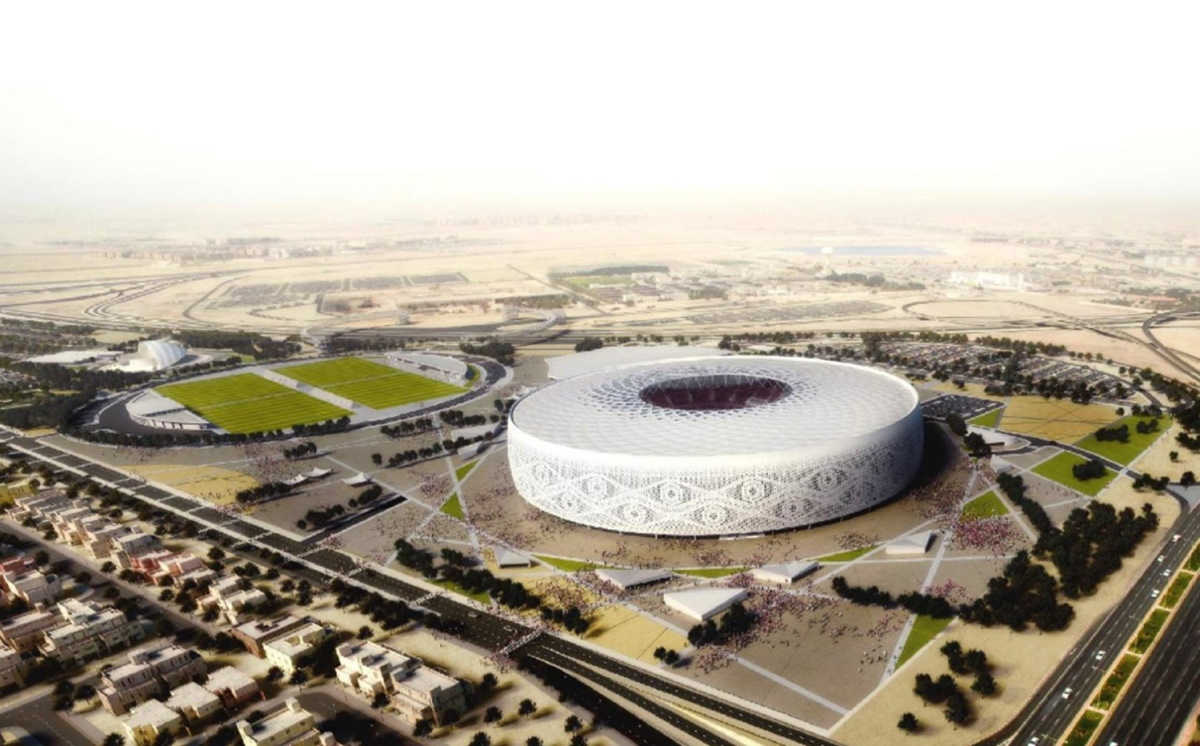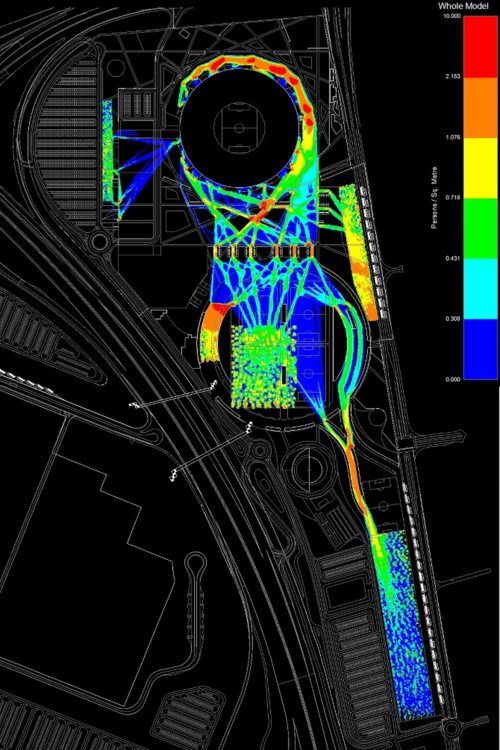The 2022 World Cup: Infrastructure and Security
This 2022 is the first time that the World Cup tournament has been played in a Middle Eastern country, an important event that marks a before and after in the history of football during the months of November and December. The city of Doha is one of the hosts, and it is also the first time that Qatar has hosted a sporting event of this magnitude.
We have seen that there have been challenges since this country was chosen as the venue, beginning with environmental characteristics, specifically the climate. Arriving to change the dates previously planned and postponed for a period in which the temperatures could be more tolerated by the attendees and players.
To accommodate a large number of people in this event, adequate infrastructure was required. And we know that building an infrastructure that is environmentally sustainable, with quality materials requires a lot of effort. – and efficient communication between parties-, in addition to support in technologies that allow the objectives to be achieved. Many other factors related to a real and palpable territorial planning had to be taken into account. Bentley Systems, has been working with Qatar for many years to overcome these types of challenges, so the most suitable choice was their LEGION software.

LEGION is an innovative AI-based simulation tool with which you can dynamically create various types of scenarios related to pedestrian crossing or leaving crowded areas.
With this software, it is possible to carry out all kinds of analysis, record and play simulations, which mimic all aspects related to humans, such as the environment, spatial restrictions and their perception. It is fully interoperable, as you can integrate your products with other applications and really understand the interaction between pedestrians, vehicle traffic, and environmental features such as temperature/weather. It supports the incorporation of all kinds of geospatial data, allows viewing and sharing information in various types of formats or extensions, in real time and with each of the project stakeholders.
It uses technology based on extensive scientific research on pedestrian behavior in real contexts. The algorithms are proprietary and the simulation results have been validated with empirical measurements and qualitative studies.
LEGION, shows what would be the behavior of an individual in a defined situation or place, and especially seen from the point of dissatisfaction. That is, each of the elements that a human represents has characteristics associated with a behavior. Verify inconveniences presented, discomfort due to invasion of personal space or frustration caused by a stressful situation.
The stadium Al Thumama was a project developed by Arab Engineering Bureau, who bet on LEGION as a dynamic solution that would allow them to see how event attendees - and also the protagonists - could have the best possible experience and without setbacks at the entrance, exit or during halftime. It has a capacity for 40 people, therefore, they have thought about the safety of all those who will enjoy its facilities, and one of its main objectives was aimed at the correct evacuation of the stadium in a period of 90 minutes under normal conditions. , and in 8 minutes during an emergency.
They began then with the approach of a pedestrian simulation model in real time, which allowed verifying the specific requirements of the stadium in terms of design and planning. Through software like this, they were able to visualize what would be the characteristics that would help the viewer to have an optimal experience.
The stadium's bold, circular shape reveals the gahfiya, the traditional woven cap adorned by men and boys across the Arab world. An integral part of family life and central to traditions, the gahfiya symbolizes the coming of age for youth. A moment of self-confidence and emerging ambition that marks the first steps towards the future and the realization of dreams, it is a fitting inspiration for this one-of-a-kind stadium.”

Bentley once again establishes itself as a leader in the area of BIM, digital twins, and artificial intelligence. With LEGION, You can simulate the interactions of people with each other, present obstacles, circulation, and evacuations of all kinds of large structures such as: subway or train stations, airports, tall buildings and even their relationship with vehicular traffic.
The tool bases its operation on a meticulous investigation about the behavior of people in reality, taking into account decision making from the individual and in groups or crowds. Likewise, it highlights how movement patterns are formed, through pedestrian and vehicular traffic, important points to take into account when planning and designing any structure or infrastructure.
Bentley's OpenBuildings Station Designer and LEGION Simulator enable planners, architects, engineers and operators to apply digital twin approaches to solve today's design and operation challenges faster, more efficiently and safely at rail and metro stations, airports and other buildings and utilities, says Ken Adamson, Bentley's vice president of Design Integration.
 Thanks to all these efforts, Al Thumana Estate was a finalist for the Going Digital Awards 2021, in the category of buildings and venues. With LEGION, they were able to set up different operating modes and simulate them separately by identifying strengths and weaknesses. They set up a build mode for crowd testing, tournament mode to analyze flow during matches, and legacy mode to experience day-to-day operation post-tournament.
Thanks to all these efforts, Al Thumana Estate was a finalist for the Going Digital Awards 2021, in the category of buildings and venues. With LEGION, they were able to set up different operating modes and simulate them separately by identifying strengths and weaknesses. They set up a build mode for crowd testing, tournament mode to analyze flow during matches, and legacy mode to experience day-to-day operation post-tournament.
It should be noted that each of these operating modes had specific requirements to meet, not to mention that they were working against the clock. They validated strategies that allowed defining the best conditions for ascent, descent, parking and bus flow, as well LEGION helped to avoid possible problems related to vehicles or circumstances involving pedestrians outside the premises.
It is incredible how an operational digital twin related to all kinds of circumstances can be modeled to try to “avoid” possible negative or tragic events, promoting security, protection and risk mitigation. It is no longer just about locating a space and building a structure that is visually attractive or that stands out from the rest, now it is a necessity to consider scenarios that involve the social dynamics and environmental conditions of the environment where a building will be located.
Currently, we have adjusted to living in a pandemic situation. And yes, one of the reasons why LEGION is now key in the AEC construction life cycle is that it allows you to manage crowds, knowing that many countries still maintain biosecurity and social distancing measures.
What conclusion can we draw from all this? Let's say that possibly the reactions of the crowds can be within everything quite "predictable", and also, that the use of AI + BIM + GIS technologies help to determine how a structure can be created that has a harmonious relationship with the social dynamics.
We could highlight a recent event, an incident that claimed many lives in Itaewon - Seoul, where it was evident what the behavior of the masses is like in an emergency or danger situation. – whether real or not. Perhaps, if they had previously used a tool like LEGION, and simulated the flow of people between buildings during holidays -in an area as crowded and dense as Itaewon-, the situation would be completely different.
- Arab Engineering Bureau, determined as fundamental the safety of the people who would participate in the event, and for this reason they thought of all the details that “could go wrong”. However, we must think about the difference between a simulation and reality. Human beings are influenced by crowds -it is a fact-, although one day we may act in one way and the next our actions would probably be different.
Even so, we hope that everything develops with total normality and cordiality, as this event deserves, where the talent of the best in the world is celebrated. We will be attentive to any information related to this topic, we invite you to enjoy the World Cup with respect and responsibility.






